Our Blog - Lyon Day 4
We started our final day in the Croix Rousse neighborhood, which is up on a hill about 833 feet high, giving it some amazing views of the city below, as well as the Basilica over on a hill nearby.
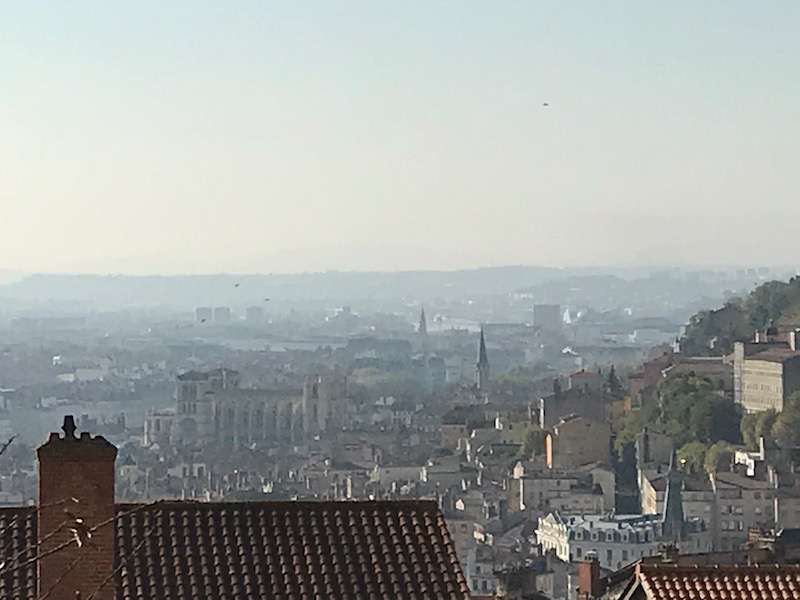
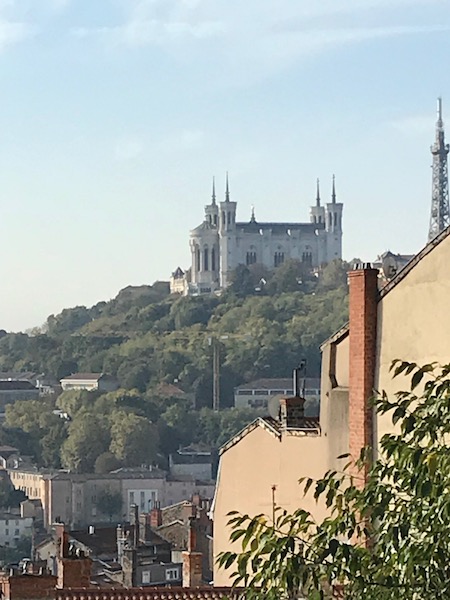
We first stopped at the Silkworkers Museum, or the Musee des Canuts. This district was heavily influenced by the silk industry, and you can see this from walking through the area and seeing the buildings that feature large vaulted ceilings. These taller ceilings were required to house the tall silk looms that were operated in this area. There are also lots of traboules in this area, which were used by the silk merchants to move the silk from the buildings to the ferry, keeping the fabric out of the rain. One of the main displays at the museum is a working Jacquard loom, which uses "punch cards" to read the pattern that it would then weave into the silk fabric.


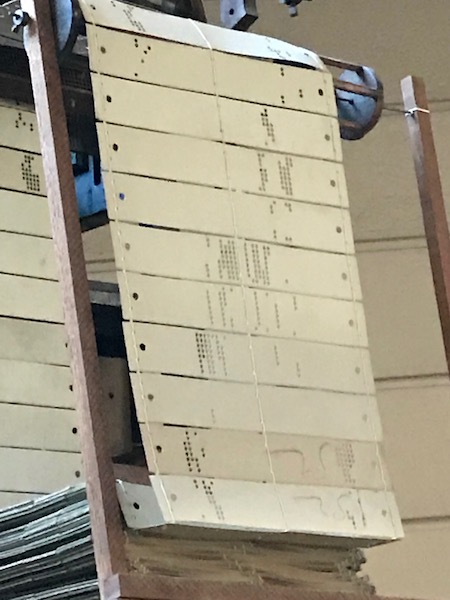
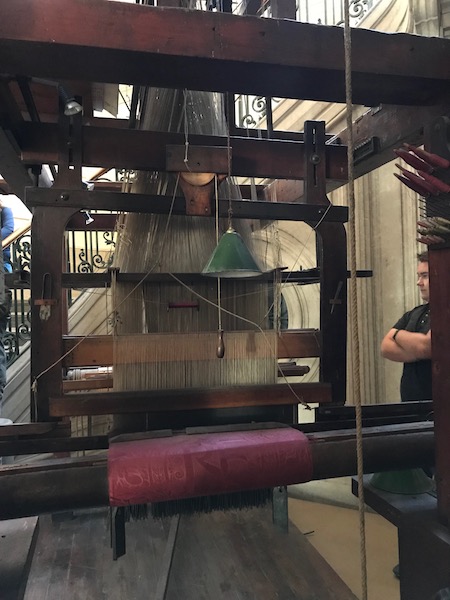
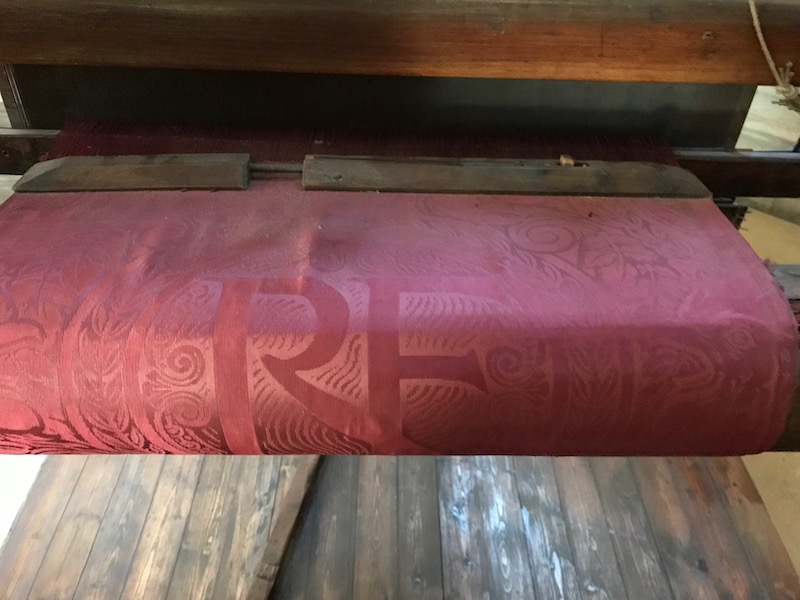
The water content in silk can vary widely, up to a difference of 40% of the total weight. The price of silk was set by weight, and therefore, by changing the amount of water, you could get more money. To come up with a more fair way of valuing the silk, a new establishment was created to establish the dry weight of wilk within a common framework. This building, the home of this group (the Condition des Soies), is where they started requiring all silk to go through this new "quality control" process. The building was completed in 1814.
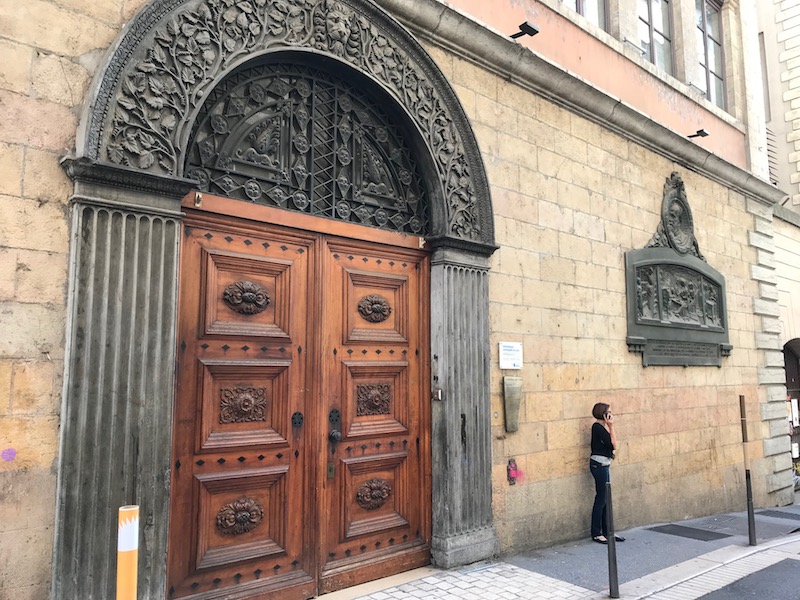

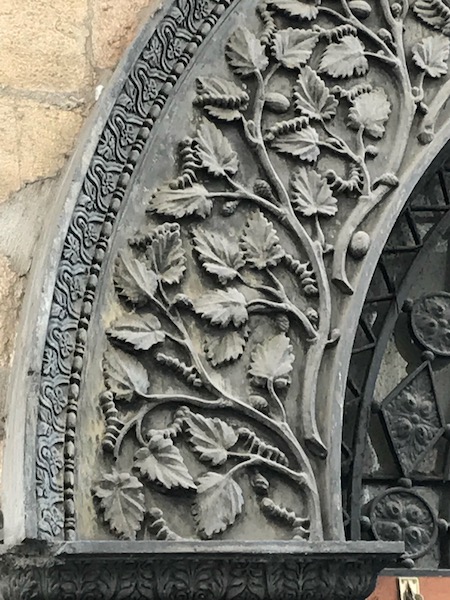
We then went to a place that does silk-screening, and walked us through the entire process. Every different color or layer has a different template. Here you can see how it starts ... with a piece of fabric and a single layer of colored design. It doesn't look like much, huh? Then each subsequent addition puts another color on, and at the end, you can see the finished product.
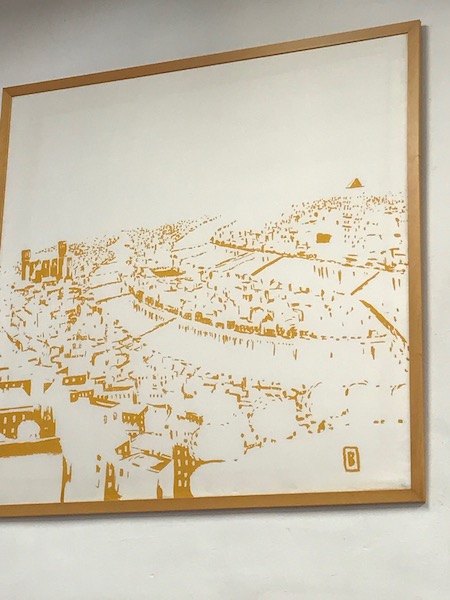


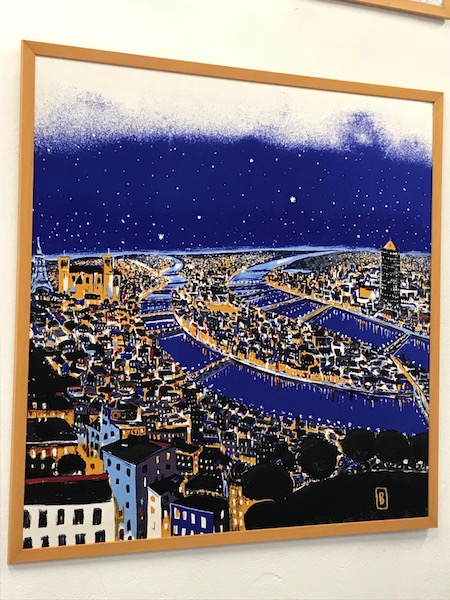
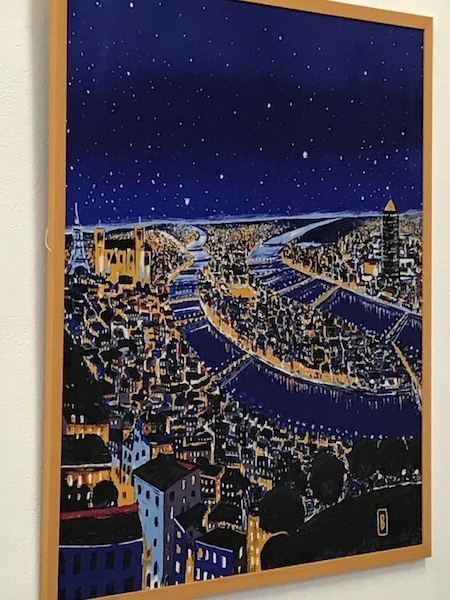
Now to show each step. Here is what the template looks like, and then they lay it on the fabric. At one end they add the colored paint/dye, and then they push that color across the template. The color is transferred to the fabric in each of the openings in the template. That template is then lifted (you can now see the red color on the fabric) and moved to the next segment in the fabric.

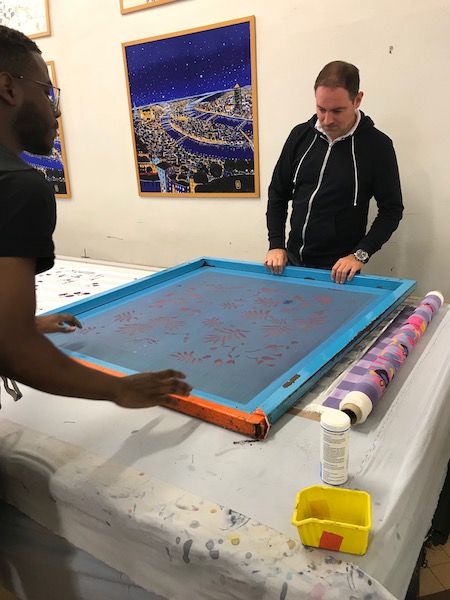


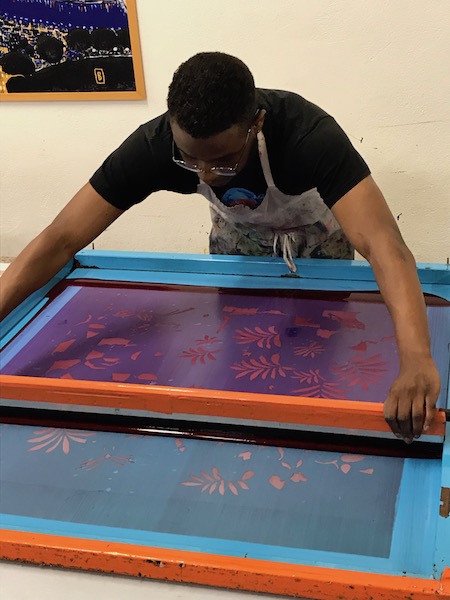
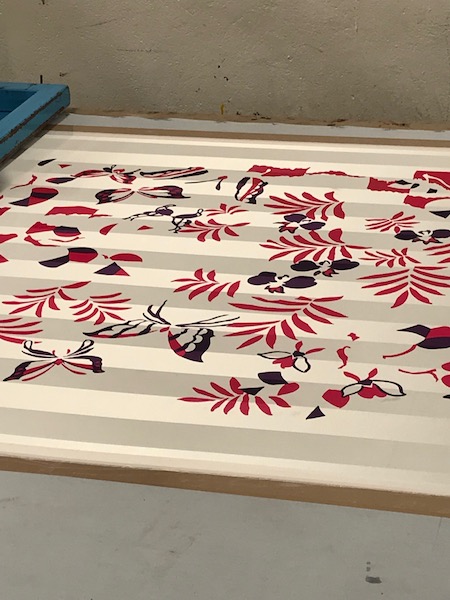

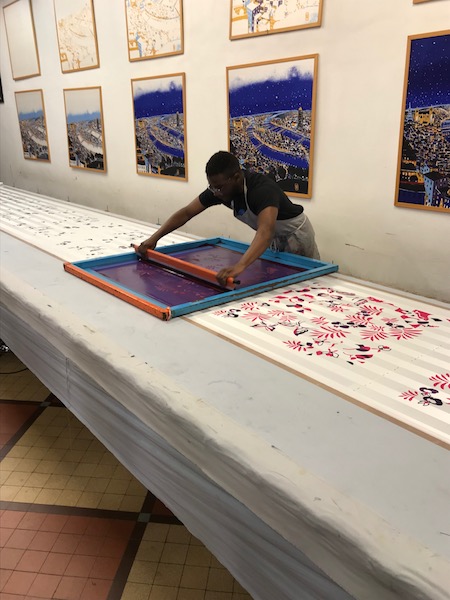

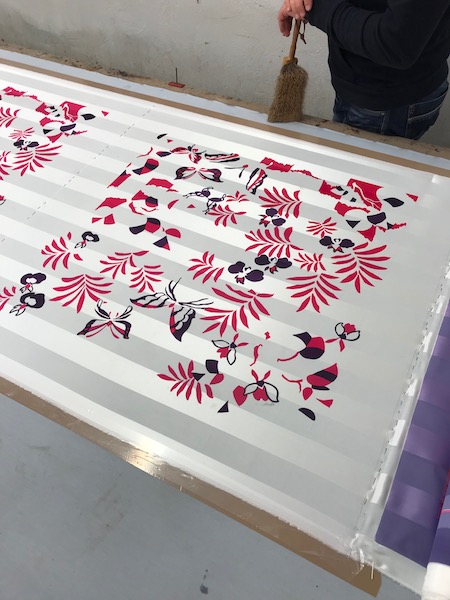
The finished product!
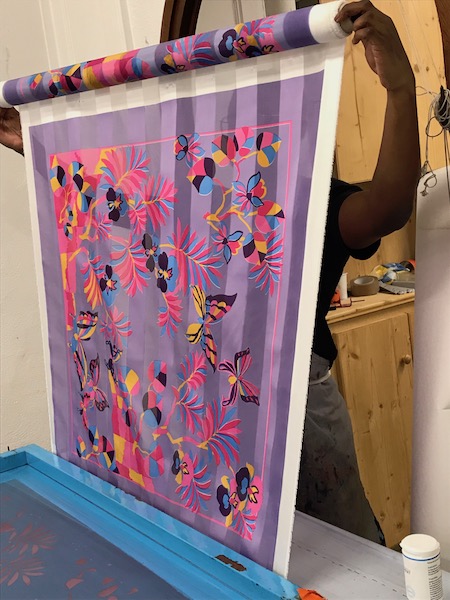
At this shop, they also do hand-painted velour-type silk. You can see (hopefully) that the white parts are a velour-type addition on the black silk. Then someone hand-paints the colors.
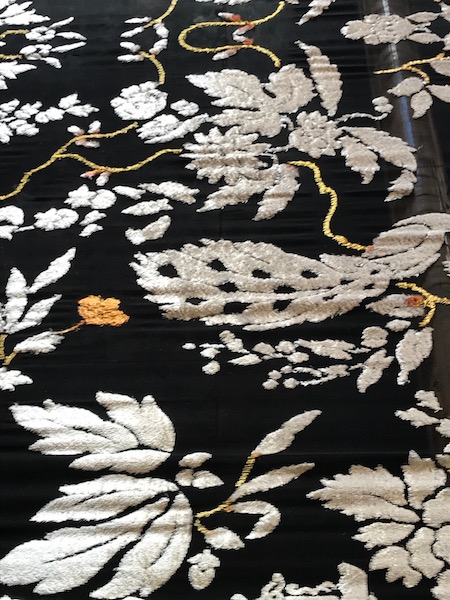
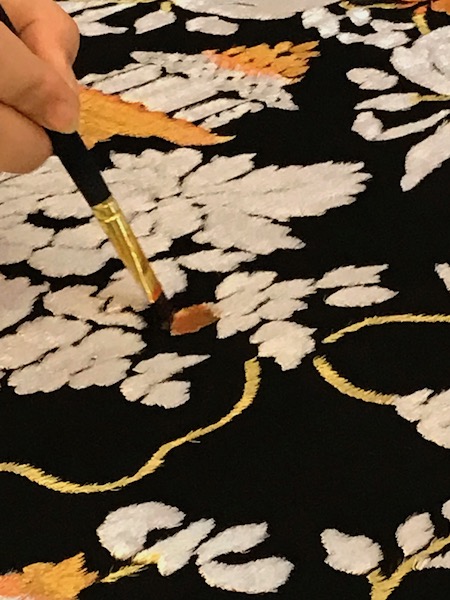
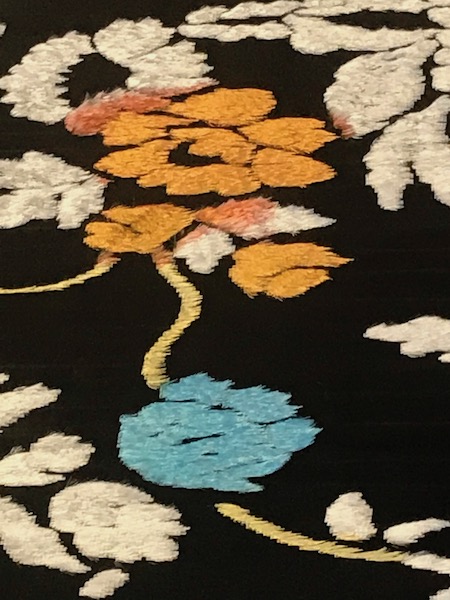

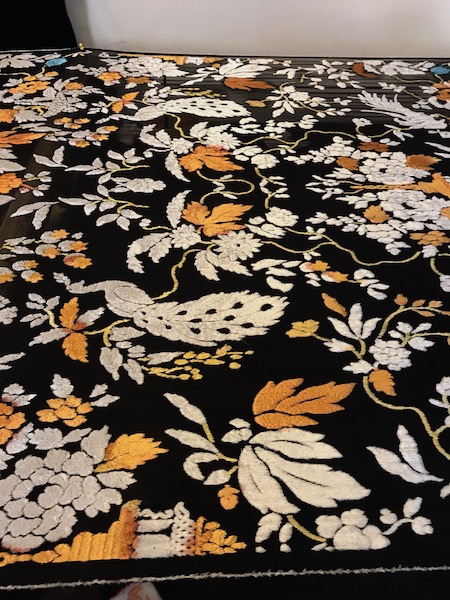
We then did a boat ride on the river, and got to grab a few pictures of interesting buildings along the river.
Start of boat trip, this is a church that is now an art school.

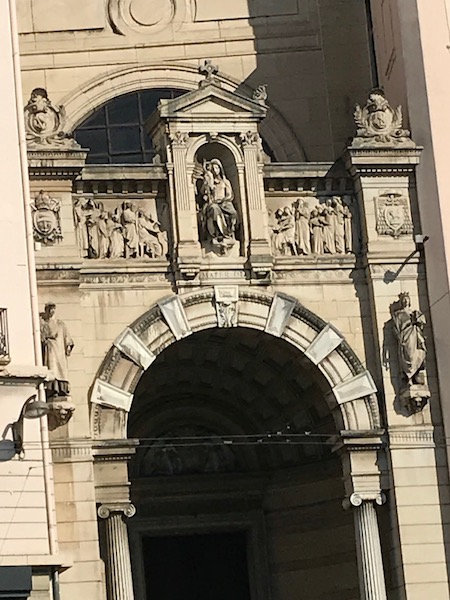
And then a former prison which has been turned into a finance school.

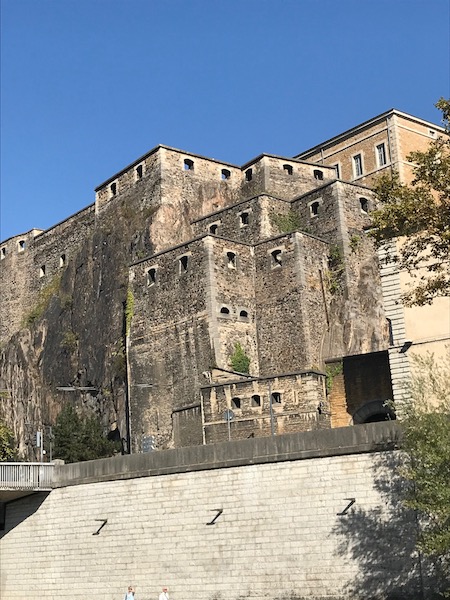
As we went along the river, we could get a different view of the Basilica, the Metallique Tower, Saint Jean Cathedral, and finally Saint George's church.
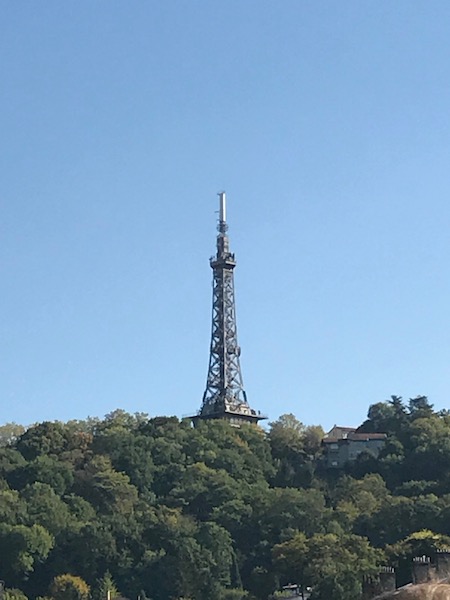
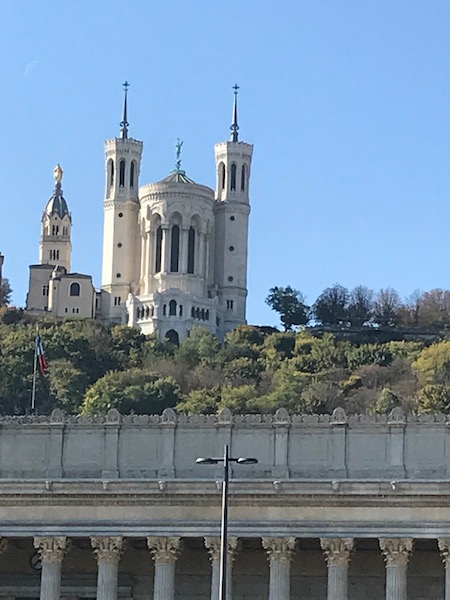
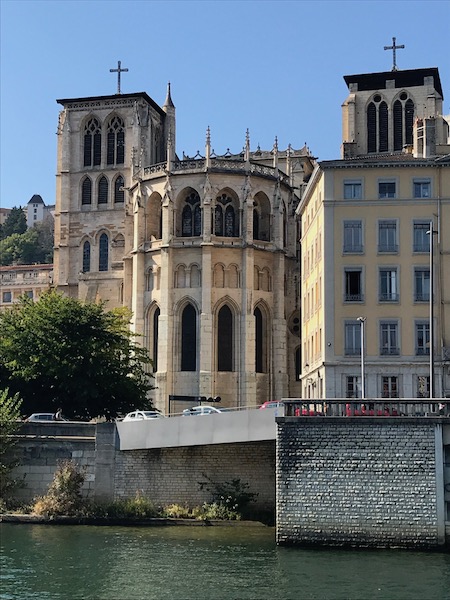

Going up the hill, you can still see some remnants of the old city walls.
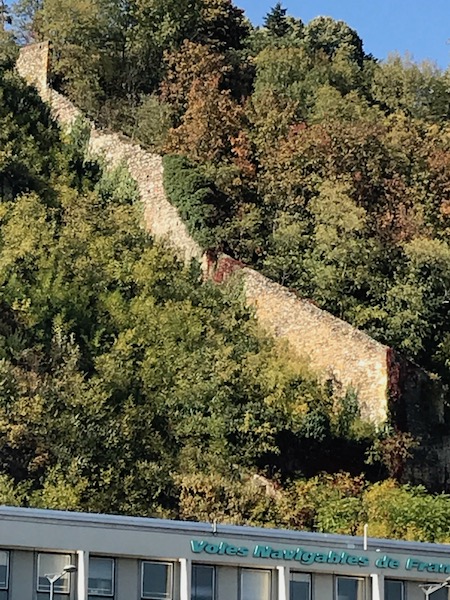
For many years, the industrial district of Lyon was drab and unattractive. In a bid to revitalize the area, there was a building program which included a set of unique buildings. One of these buildings is the Orange Cube, finished in 2011. Not only does it stand out by being painted bright orange, but perforated steel, punctured with different sized holes, has been used to clad the building to give it the look of a giant orange piece of cheese. The steel screen acts as a shade, minimizing direct sunlight on the interior, while creating intricate patterns, helping to scatter light on bright, sunny days.
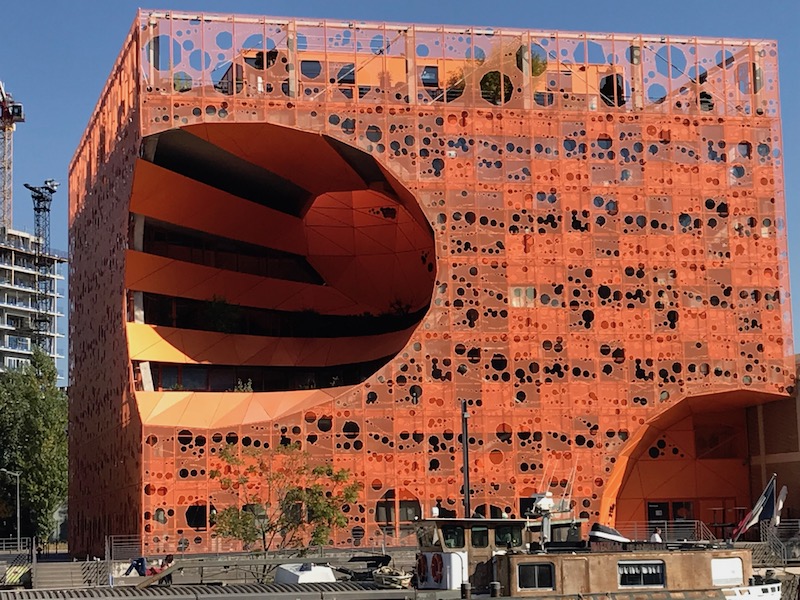
The same architectural firm that did the Orange Cube also created the Green Cube. This one was opened in 2015 and is the headquarters of EuroNews. With the two holes in the side, it resembles a big green pencil sharpener. They are meant to look like "eyes", which represent the new organization capturing the events of the world around us.
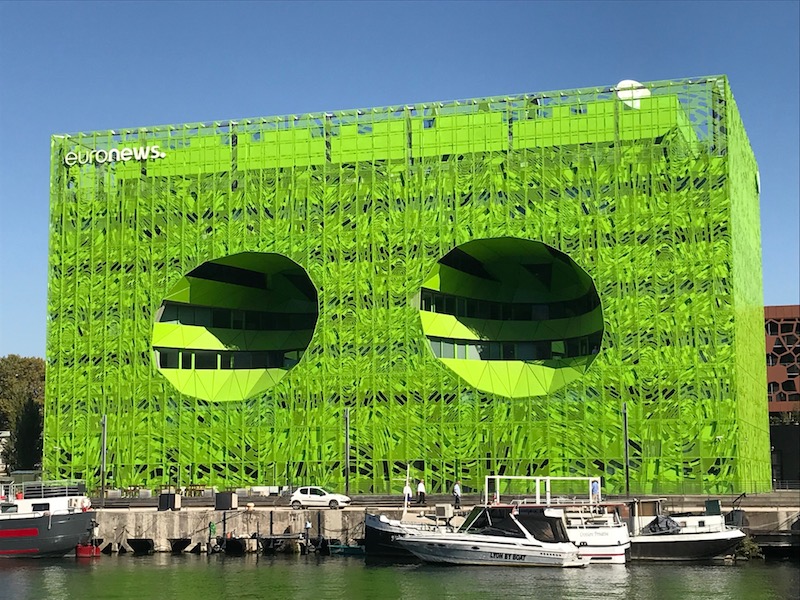
The Musée des Confluences is a science center and anthropology museum, which was opened in 2014. The deconstructivist architectural design resembles a floating crystal cloud of stainless steel and glass.

In the southern part of the middle Presque'Ile, there are new apartment buildings being built which are designed to look like shipping containers.

These are houseboats now, but historically, these boats were used to carry goods up and down the rivers.

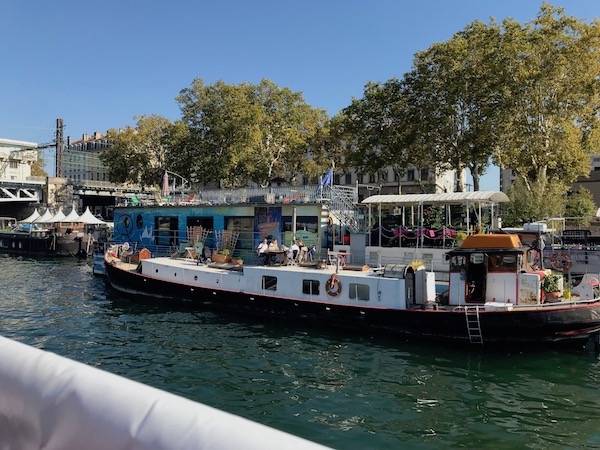
Some of the bridges have great sculptures on it, like this one with a man and a woman with their backs to each other.
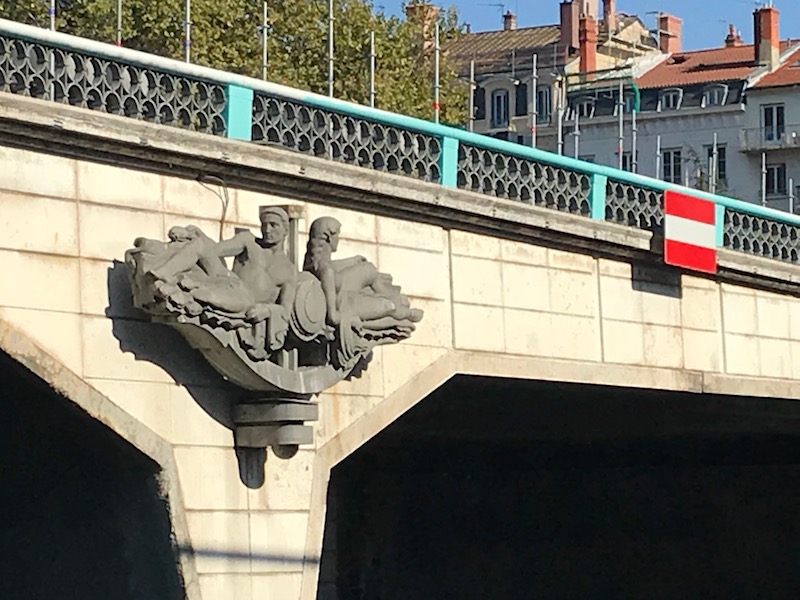
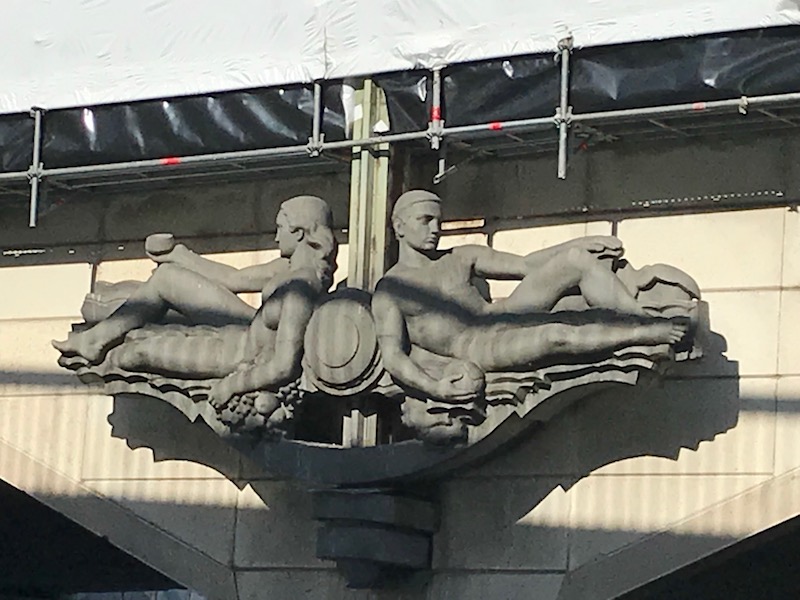
Here you can see the remains of one of the bridges that were bombed during World War II and not rebuilt.
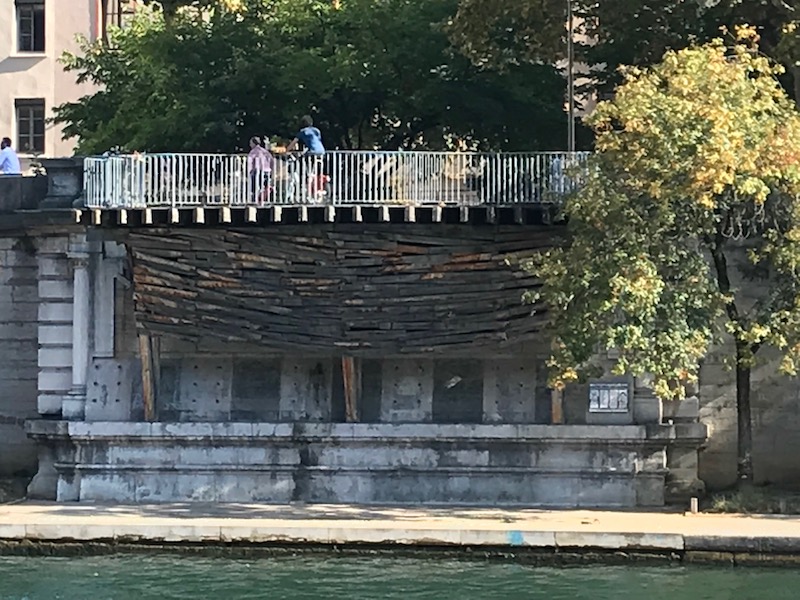
We spent a little bit of time in the Musée des beaux-arts de Lyon, which is the Museum of Fine Arts. It is housed in a 17th century building which is a former Benedictine convent.
This was most likely an altar-piece and shows the last judgement in 3 different panels. The first picture is the whole thing. The second picture shows the middle portion, which is God (at the top) looking down on his subjects on earth, who at this point in time, are all combatting the plague. You can see the one guy who has died at the very bottom. Next is to the right, and it represents hell. You can see people in the water at the top, then at the bottom are those that are being devoured by a monster. The left-hand side in the final picture shows those selected entering the kingdom of heaven.
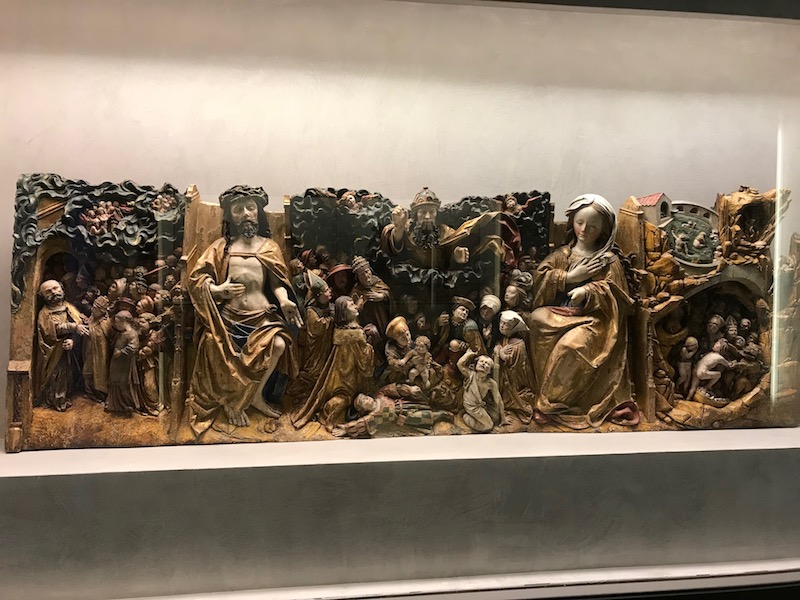
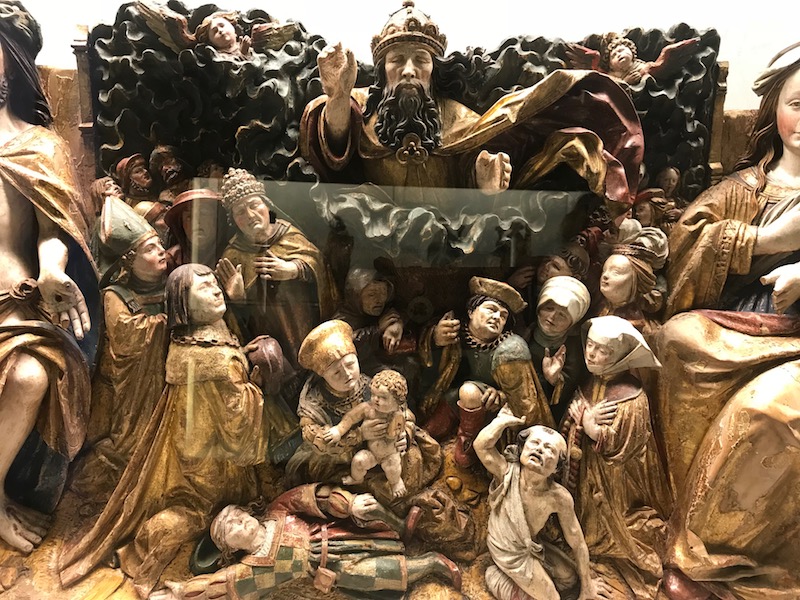

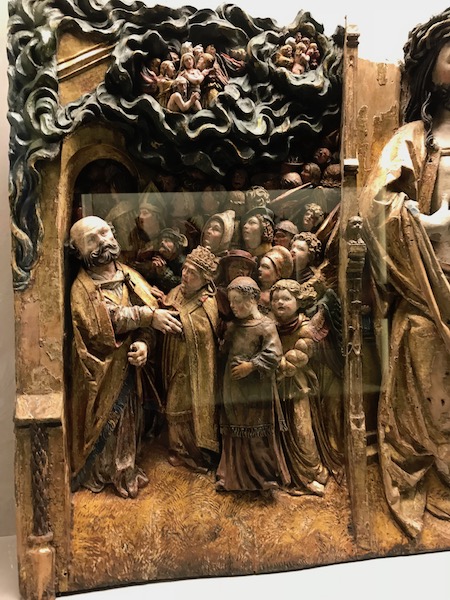
Claude Monet made several trips to London between 1899 and 1905. During this time, he would make multiple paintings of the same scene at different times of the day and under different light. In this scene, you can see the Charing Cross railway bridge in the foreground through the thick London fog. In the background is the silhouette of the Parliament building emerging from the mist.
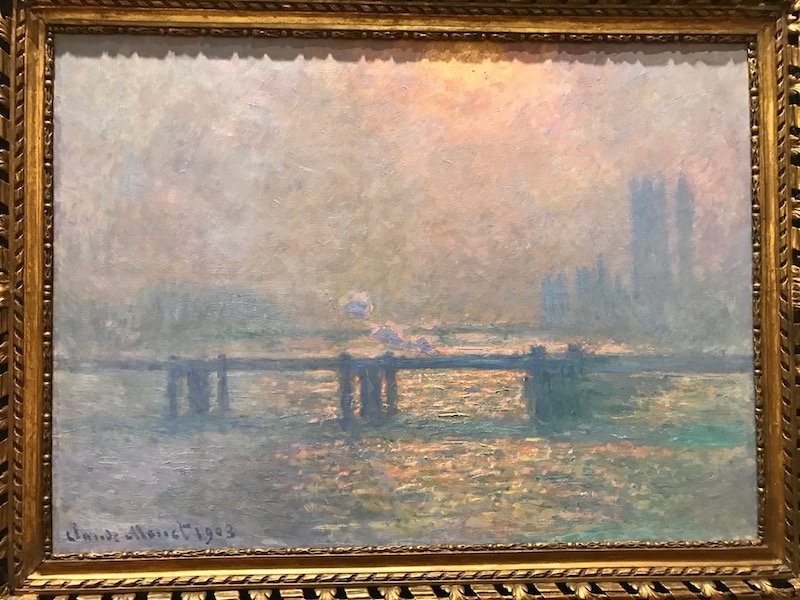
This is the start of the Egyptian section, and had the door/entryway to a tomb. The archaeologist who found it was from Lyon and requested that it be sent here. It has been here since the 1930's!.
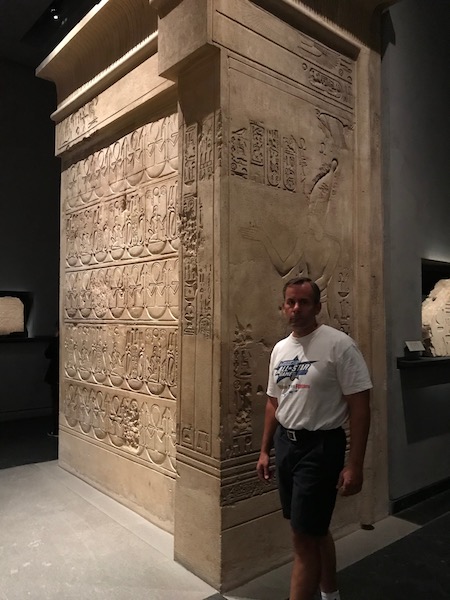
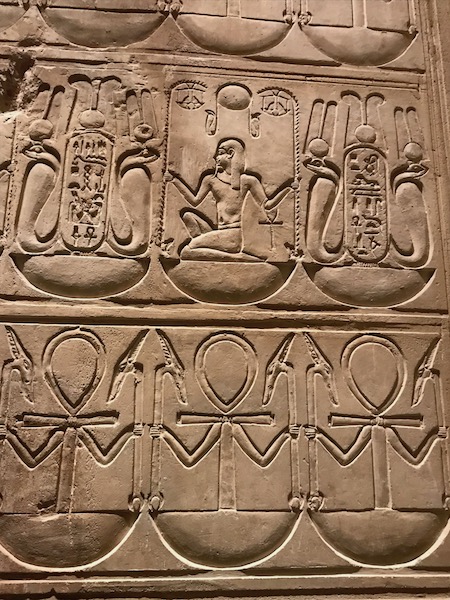
These stele date to 1500-1200 BC and are dedicated to Osiris.
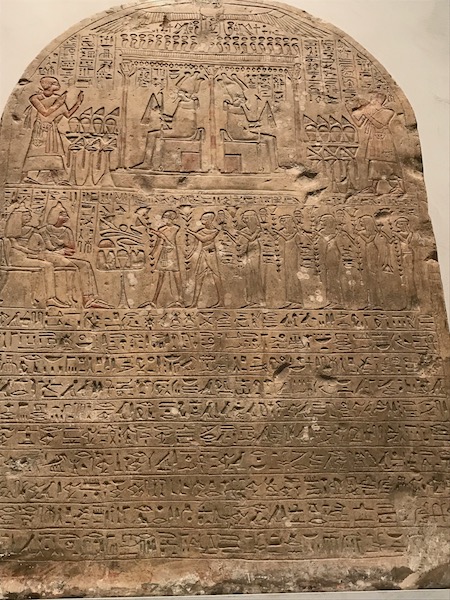
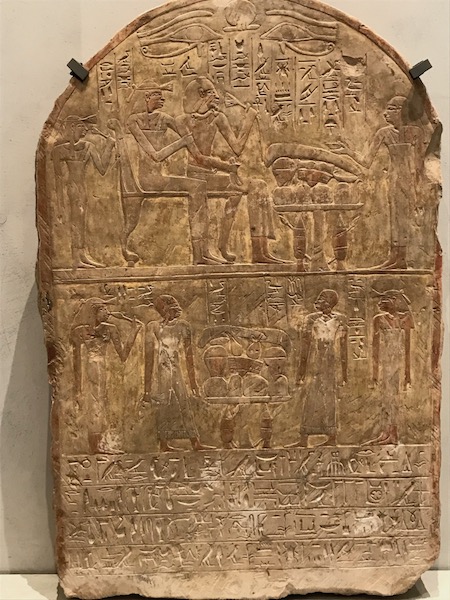
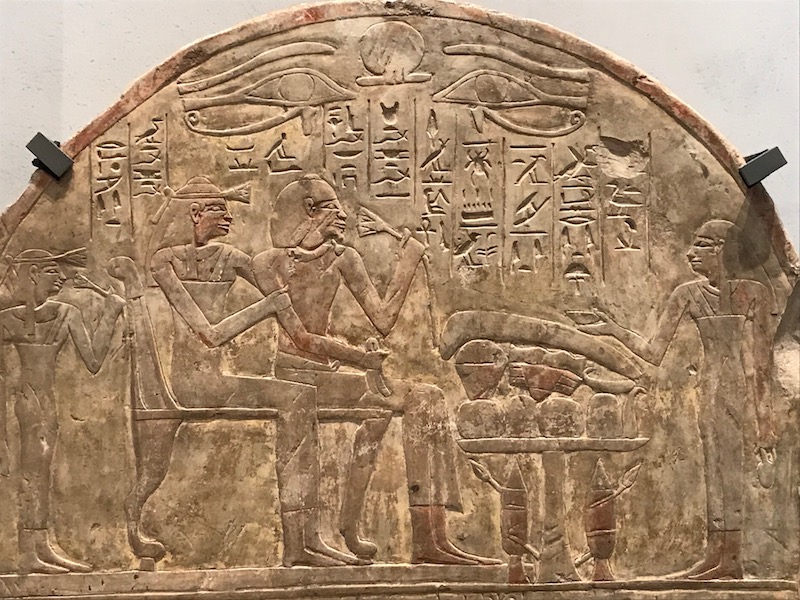
There are also rooms devoted to Ancient Greece and Italy, including a series of Attic vases in black-figure. This piece dates back to 500 BC and shows the departure of Artemis accompanied by Apollo.

This Roman mosaic dates back to the 2nd half of the 2nd century BC and shows a Néréïde (a sea nymph), Triton (son of Poseidon and Amphitrite), and a sea monster.

This lovely piece is a funerary urn made out of alabaster from the 1st century AD.
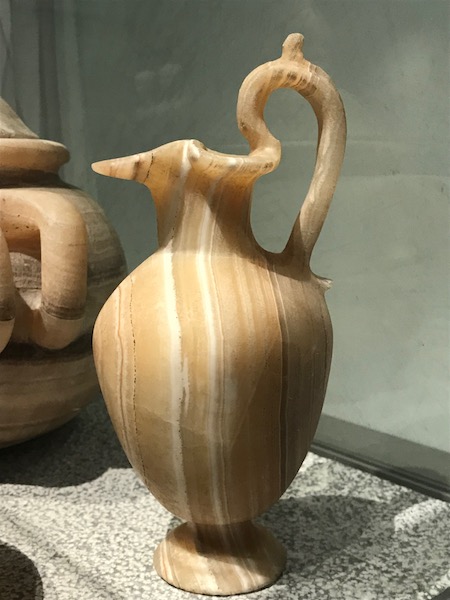
Go back to the main Lyon blog page.
Or head back to the main blog.